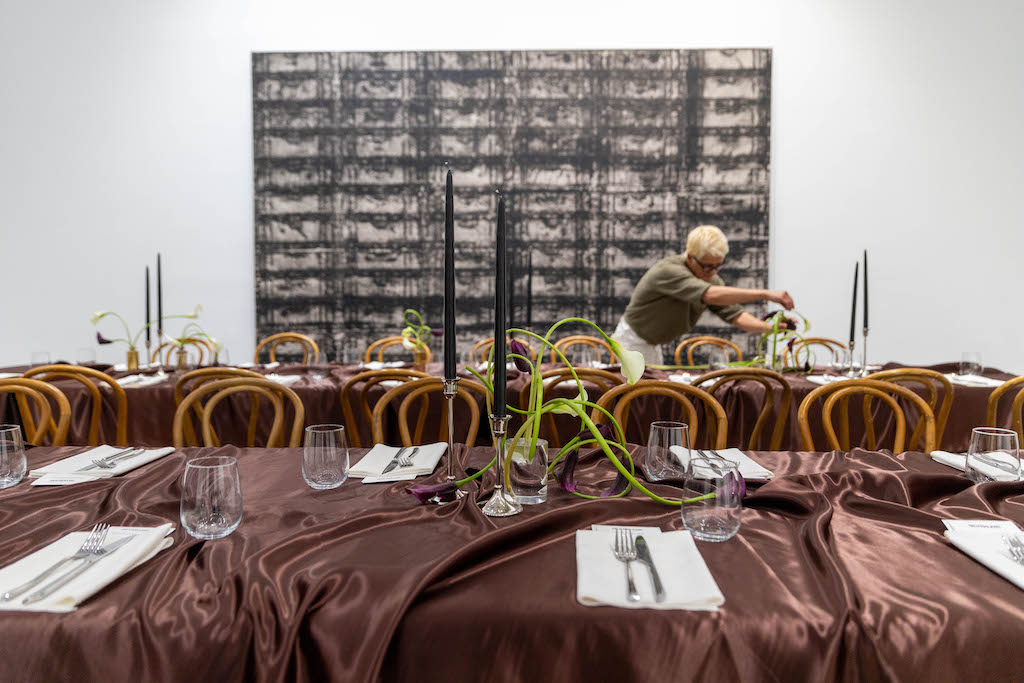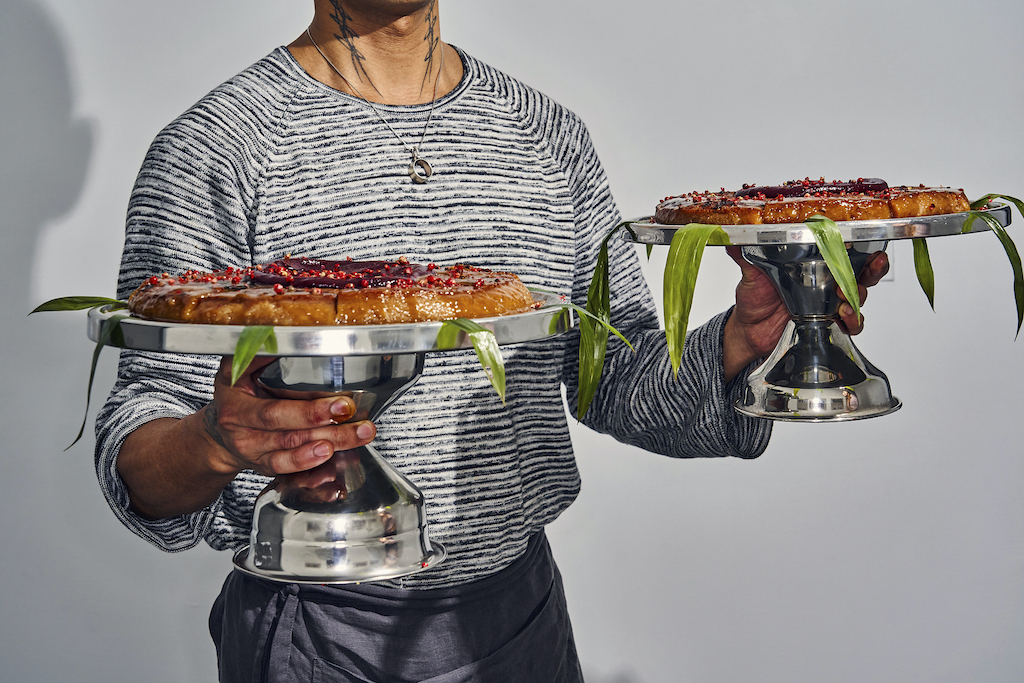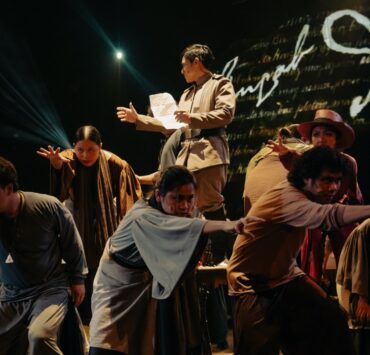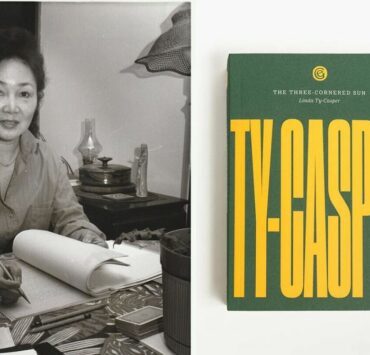New York-based Filipino chef Lj Almendras recently created a six-course dinner at Silverlens Gallery in Chelsea to celebrate the opening of artist Nicole Coson’s latest show “In Passing.”
[READ: ‘The personal is global,’ says Nicole Coson in latest New York exhibit via Lifestyle INQ]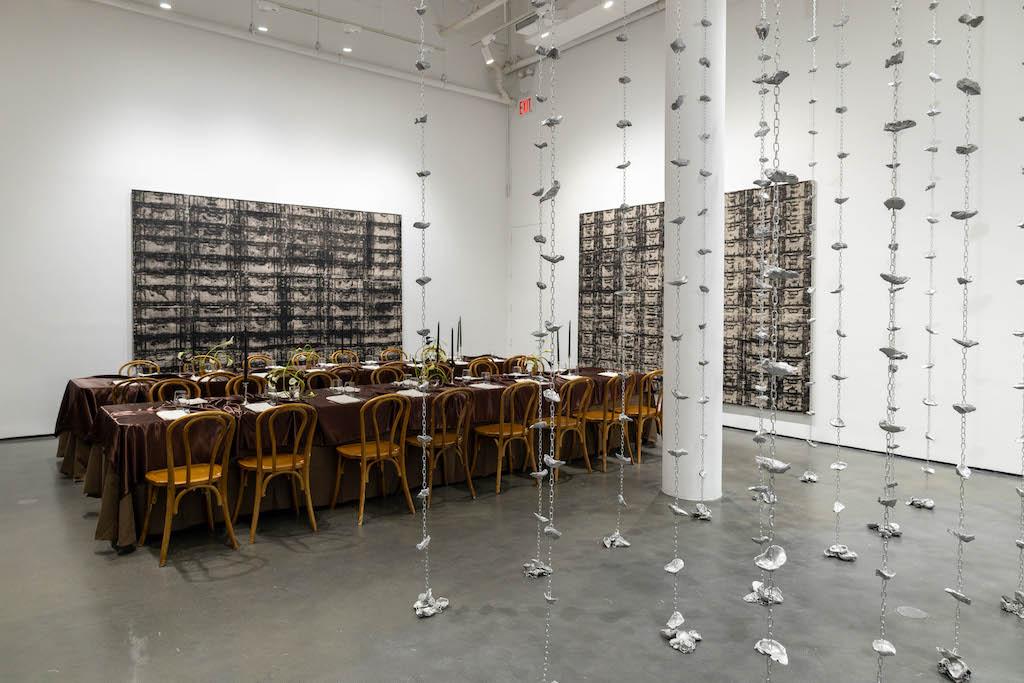
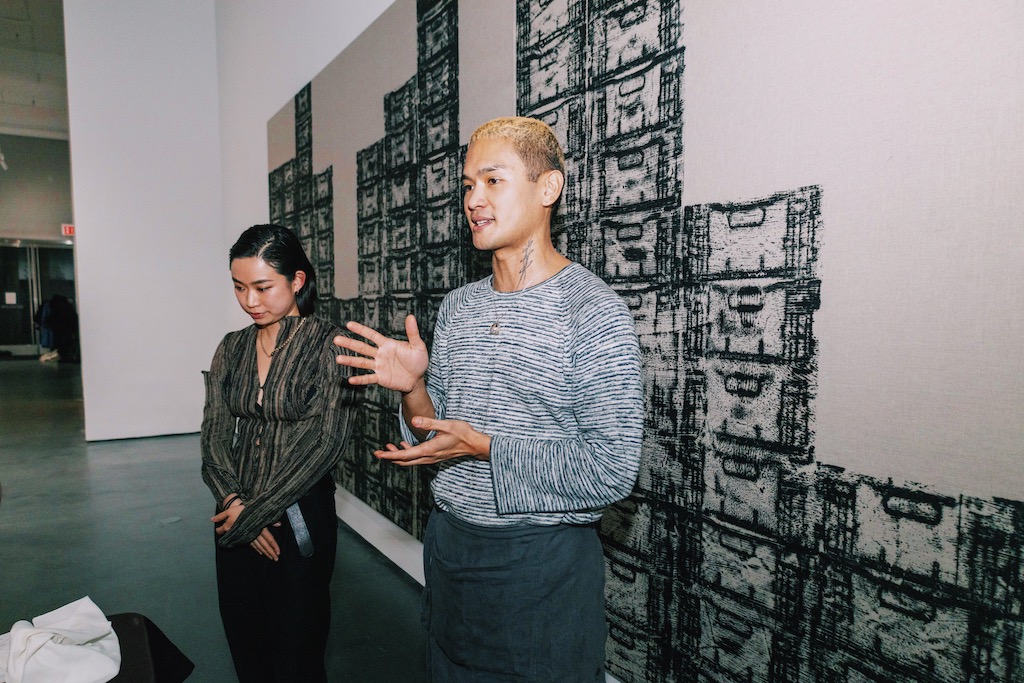
Almendras is the chef and founding director of Dila, a Filipino food popup. Born and raised in Cebu and trained at New York restaurants Rolo’s, Ammazzacaffè, and Vietnamese concept Monsieur Vo, he aims to cultivate culinary experiences that reflect the joyous dynamism of Cebuano and broader Pinoy food culture through the lens of a curious, insatiable immigrant. Almendras’ Dila caters to an unabashedly omnivorous palate, a concept in celebration of third-culture cuisine.
To tie up with the Silverlens’ show’s central object—the humble plastic shipping crate, a material symbol of the global supply chain—Almendras, together with Coson, conceptualized a dinner replete with both mainstream and underrated Filipino flavors. Think Western Visayan comfort food binakol consomme served in coconut shell bowls and black and white pandesal made earthy and nutty with sesame seeds and charcoal, referencing Coson’s black crate imprints.
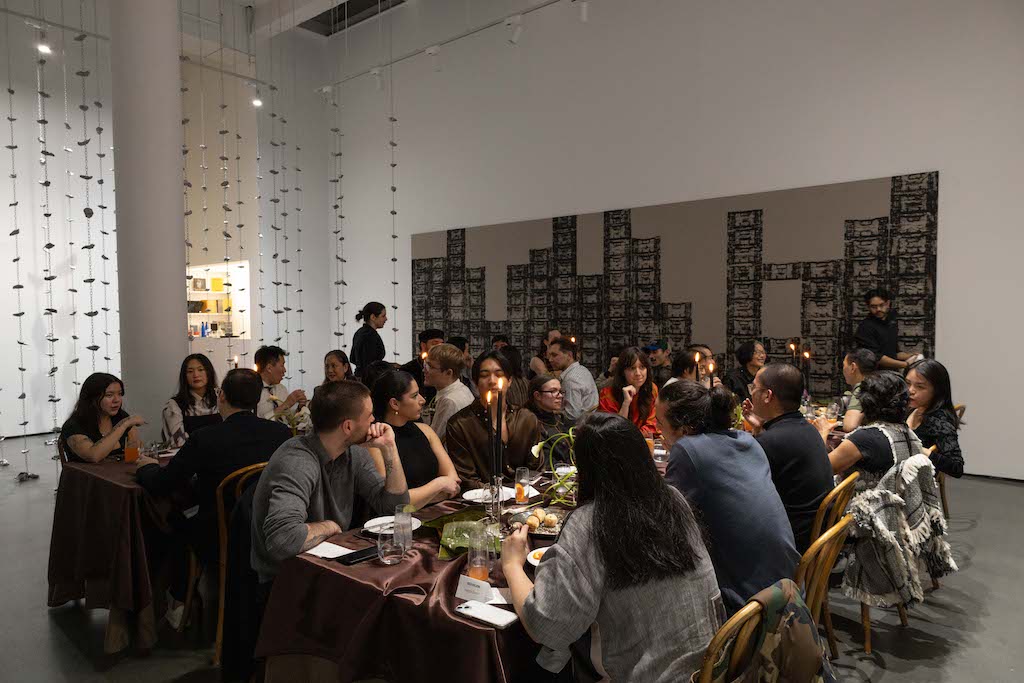
True to the show’s underlying theme of globalization (the crates being both physical and metaphorical vessels of cultural trade), the prompt for the dinner, Almendras told Nolisoli.ph, came from a book that Coson gave him on the Americans’ “war on culture,” specifically on Filipino cuisine in the 1890s. Determined to remold their colony into a mirror of their own land, the Americans “influenced” what Filipinos consumed and ultimately how the locals perceive their own culinary heritage: as something inferior to that of the west.
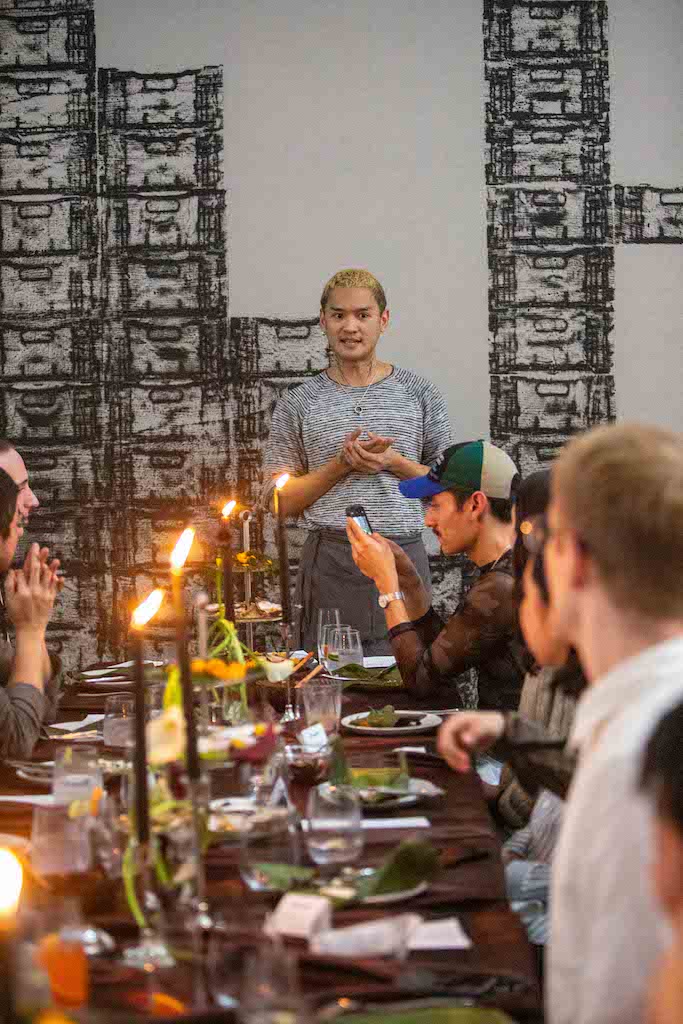
I want to keep showcasing our food in new spaces because I always think Filipino cuisine is very much transferable and adaptable.
In this interview, Almendras breaks down the details that went into creating the menu, from his initial meeting with the artist to sourcing Filipino ingredients in Chinatown, and expanding the vision of his concept Dila via new settings.
Hi Lj! Congratulations on a successful dinner at Silverlens. Do you remember how this idea of putting together a themed dinner for Nicole Coson’s exhibit opening came about?
Nicole Coson and I saw each other last year at Maria Taniguchi’s exhibit at Silverlens. That’s when I found out that she had worked in food before and we started talking about doing a collab of some sort. Then she hit me up in January asking if I would be down to do a dinner at Silverlens for her opening.
[READ: We tried making silky Chinese steamed eggs as effortlessly as artist Nicole Coson]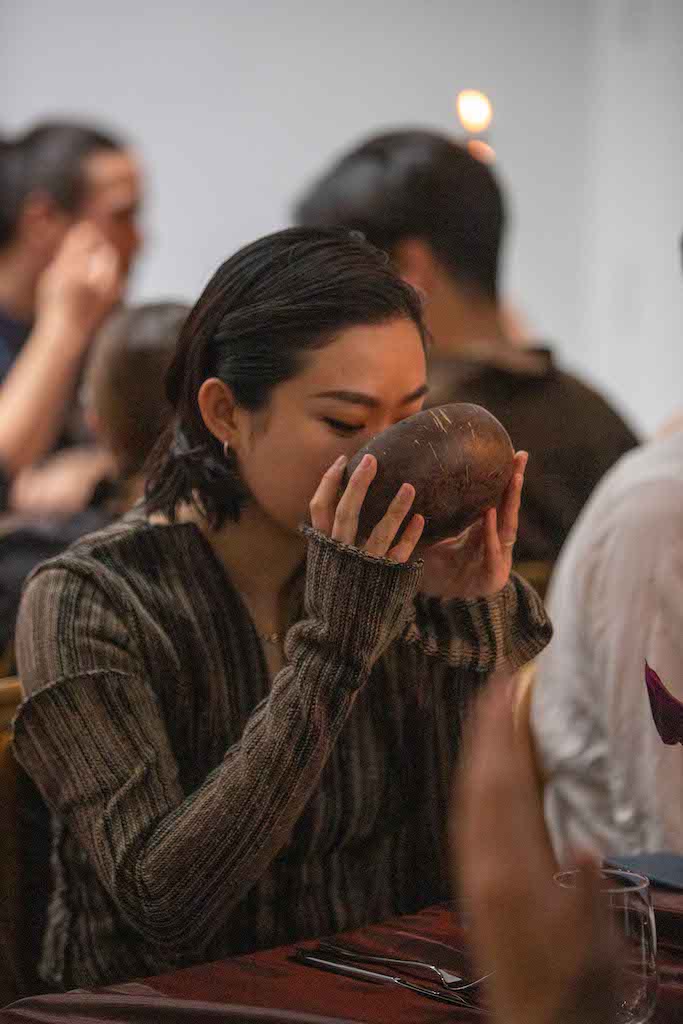
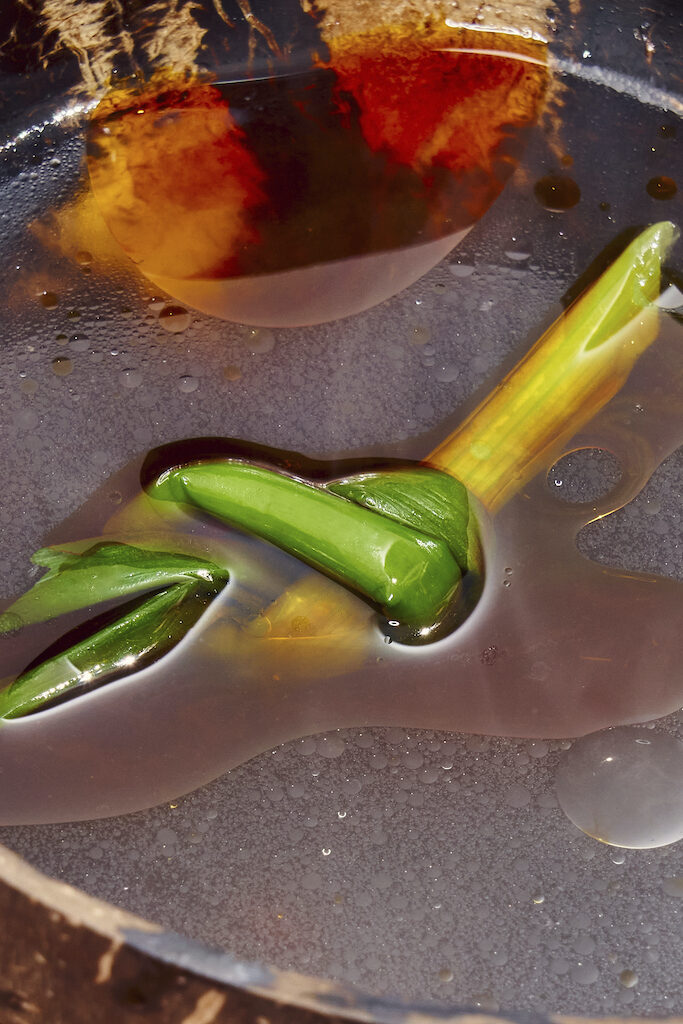
The date worked out for both of us and we had coffee. She gave me the book “Taste of Control” by Rene Alexander Orquiza Jr., which looks into how American colonizers began to influence what Filipinos ate and how we perceived our own food. It was a good conversation starter and got me thinking about colonial mentality in relation to food, which has always been an issue that I seek to address by the type of food that I bring to my dinners or events—not seeing our food as inferior to other cuisines and leaning into aspects of dishes that make it Filipino, whether that’s in ingredient or how it’s presented or offered at the table.
Apart from the overall theme, Nicole started our brainstorming with some of her favorite dishes such as binakol, liempo, and oysters. Then we thought it would be nice to incorporate some Pinoy-style skewers.
How did you relate to the show highlighting the symbolic qualities of the container as a metaphor for the circulation of people and consumer goods?
The crates were easy for me to connect to. Working in the service industry, I have carried countless of those vessels and have them in different shapes and sizes. They are essential in our work and yes very symbolic of how we are all connected with the movement of food—a great example is how specific ingredients in the menu such as ampalaya or banana ketchup are made available here in New York through importation. So this was a very easy prompt to play with. I wanted some sort of unique and relevant vessel to be present in every dish to highlight the importance of the medium and also make intuitive guesses as to why the choice of vessel.
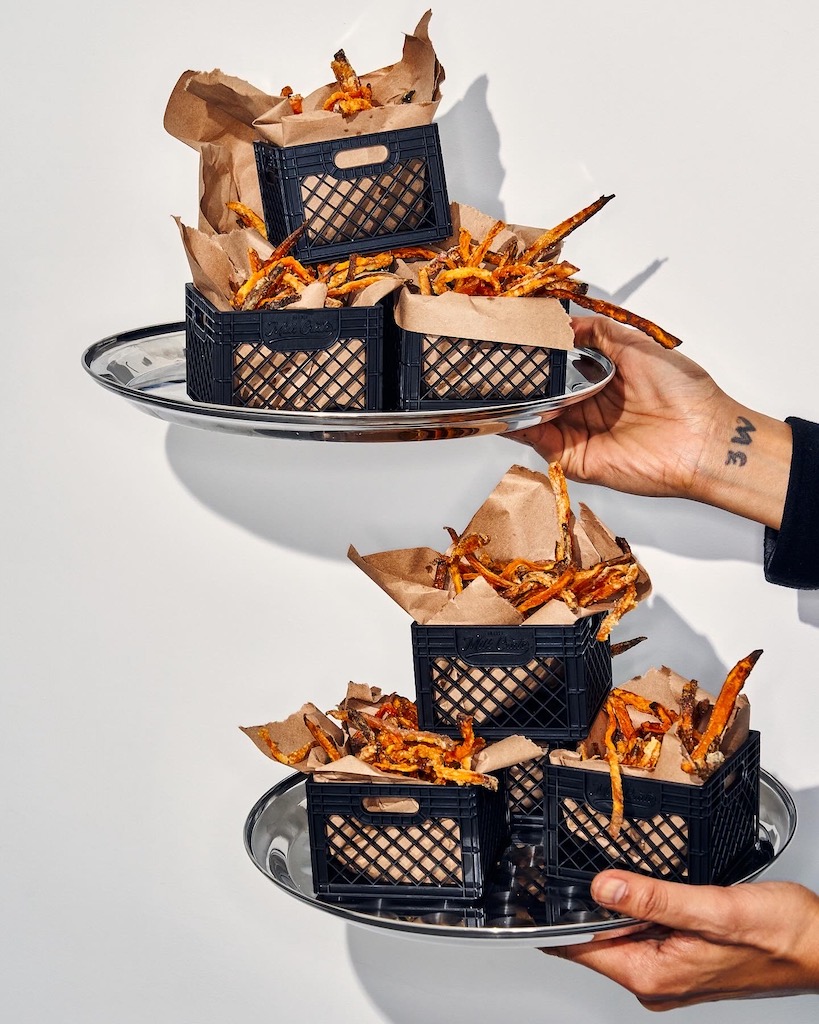
Can you talk about each course and what was your ideation process like in choosing these specific dishes like the pandesal and binakol?
Going the literal route was one way to execute the idea. Hence, the miniature crates for the kamote fries. Then I kind of pushed the idea a little further by thinking of ways to naturally present the food at the table.
The first course is consomme served in a halved coconut shell with no spoon, a nod to how binakol is traditionally cooked. The lemongrass and annatto oils were symbolic of the meeting of eastern and western flavors.
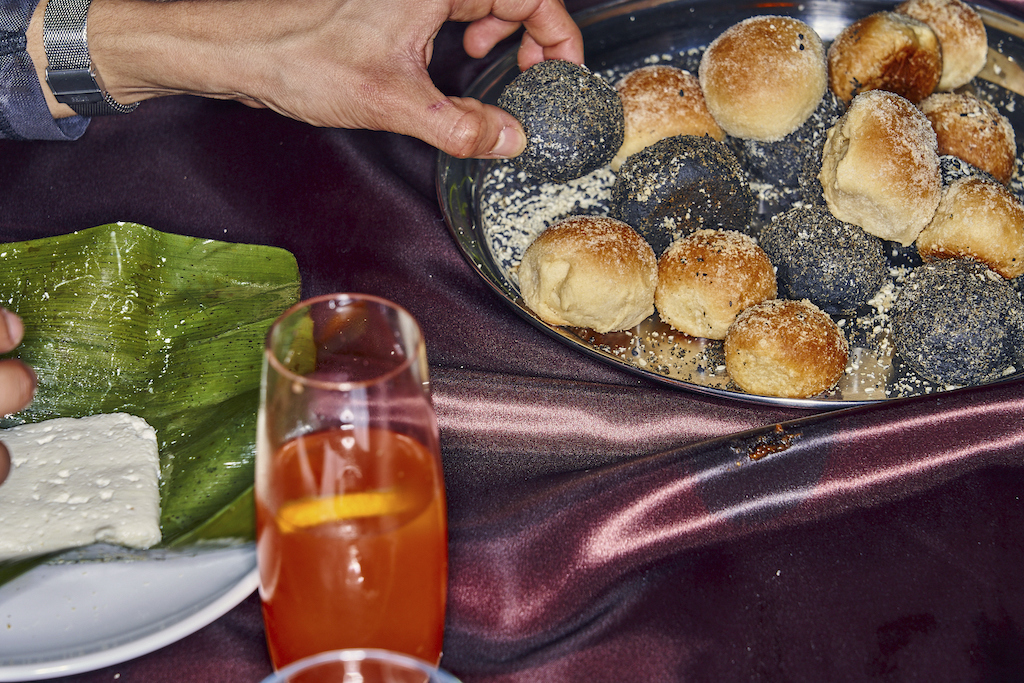
This is followed by a bread course, which was a play on how Nicole elegantly uses black/charcoal in her art. We used charcoal and black sesame seeds to create a black pandesal which was earthy, nutty, and a good pairing to go with the kesong puti—which was fermented with calamansi inside banana leaves—and a tomato chutney with soy-fig vinegar.
Nicole wanted an oyster bar. So for the third course, I saw this as a chance to have fun in textures and flavors: mango, roasted eggplant, chili corn nuts with a pile of calamansi and sea grapes, which I carry with me in many of my popups, dripping from a three-tier tray.
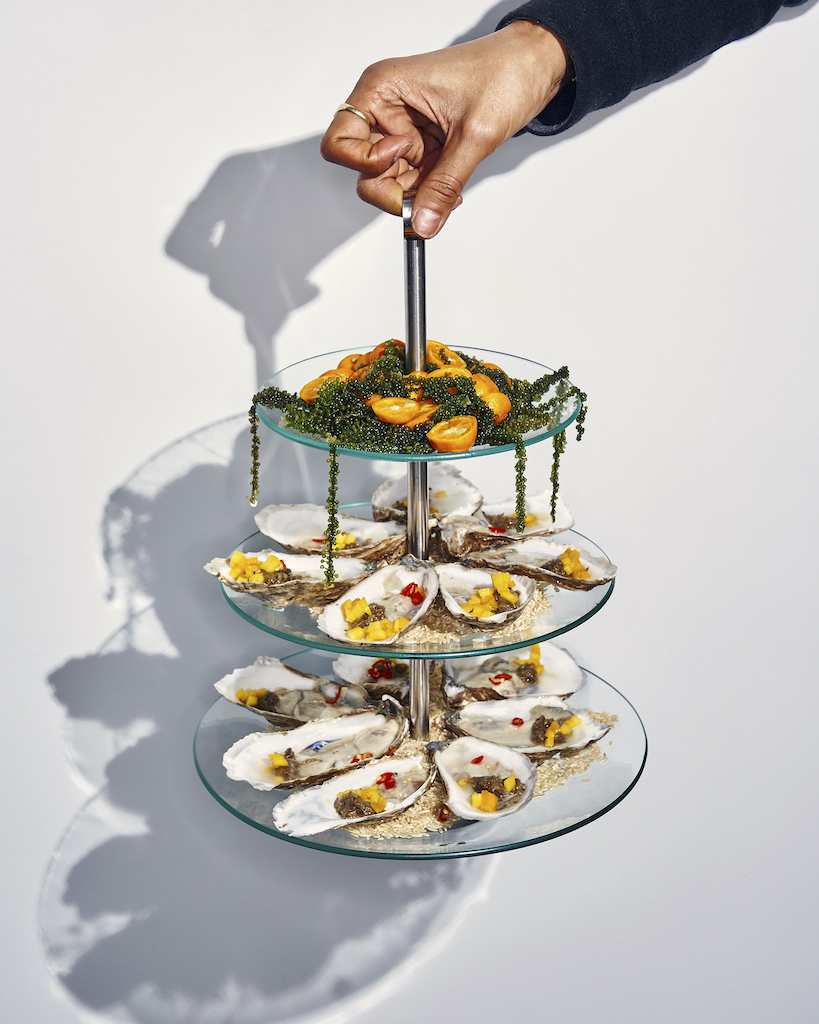
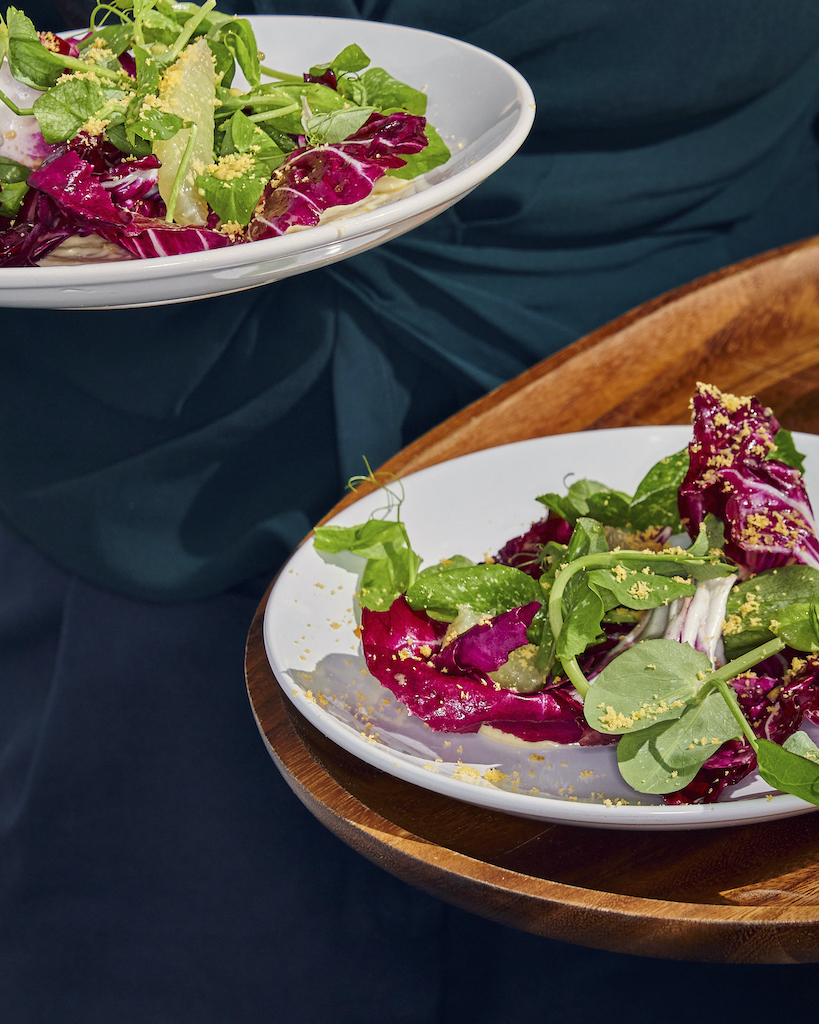
The fourth dish is the salad course. It’s always a way for me to bring something seasonal to the table: pea tendrils and red radicchios, which we may not be accustomed to but a creamy salted duck egg dressing is something we can get down with.
Honestly, the fifth course is the most challenging dish for me to execute because I find it hard to present skewers at the table when it’s taken out of the context of the “street” or when it’s not actually cooked on open fire. But sticking liempo skewers with pickled bittermelon and papaya on halved green papayas was a fun and natural idea.
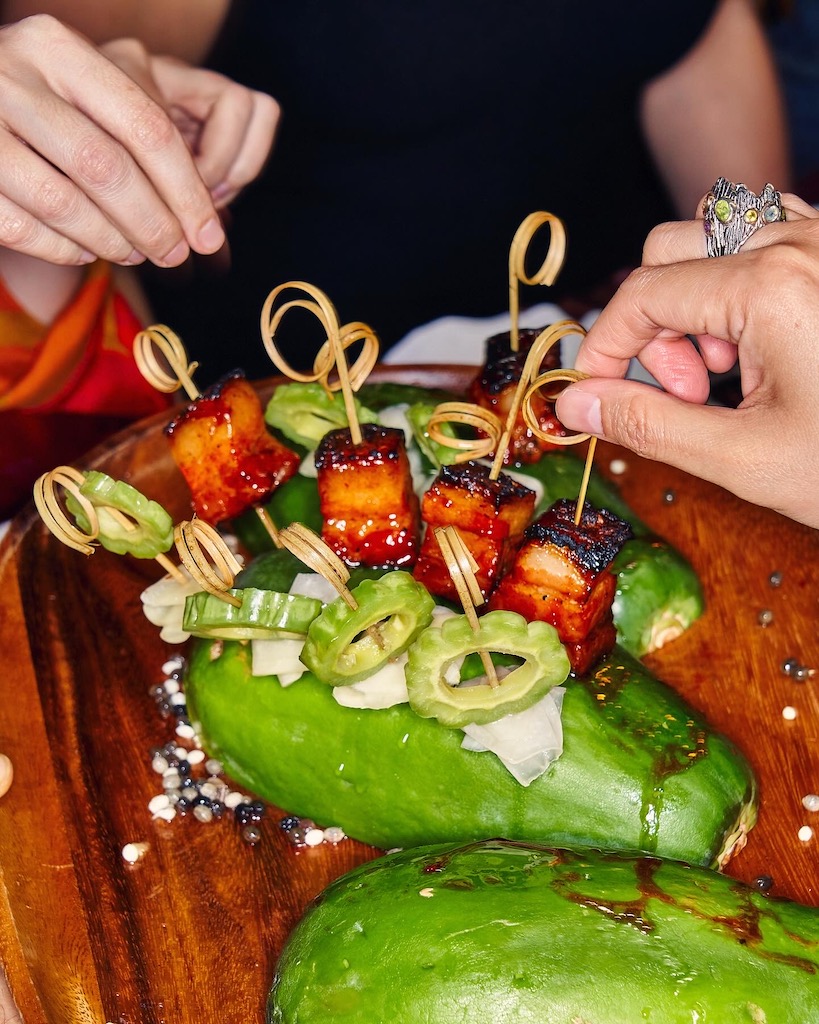
Finally, for dessert; this sweet rice cake has gone through many versions. But it’s always a hit because of my mom’s coconut caramel recipe. For this dinner, Nicole suggested finishing off with chamoy, a fun and spicy way to end the meal. It was presented like how a cake should be but with pandan leaves which I cooked the sticky rice with.
Colonial mentality in relation to food has always been an issue that I seek to address by the type of food that I bring to my dinners or events—not seeing our food as inferior to other cuisines and leaning into aspects of dishes that make it Filipino.
How was it like introducing this way of eating to a foreign audience or a largely geographically distant Filipino population?
The nice thing about these dinners is that people come in expecting to be intrigued and most often they are curious to try out what’s in front of them. So it was pretty easy for them right away to grasp the idea, the execution, and what we wanted them to experience.
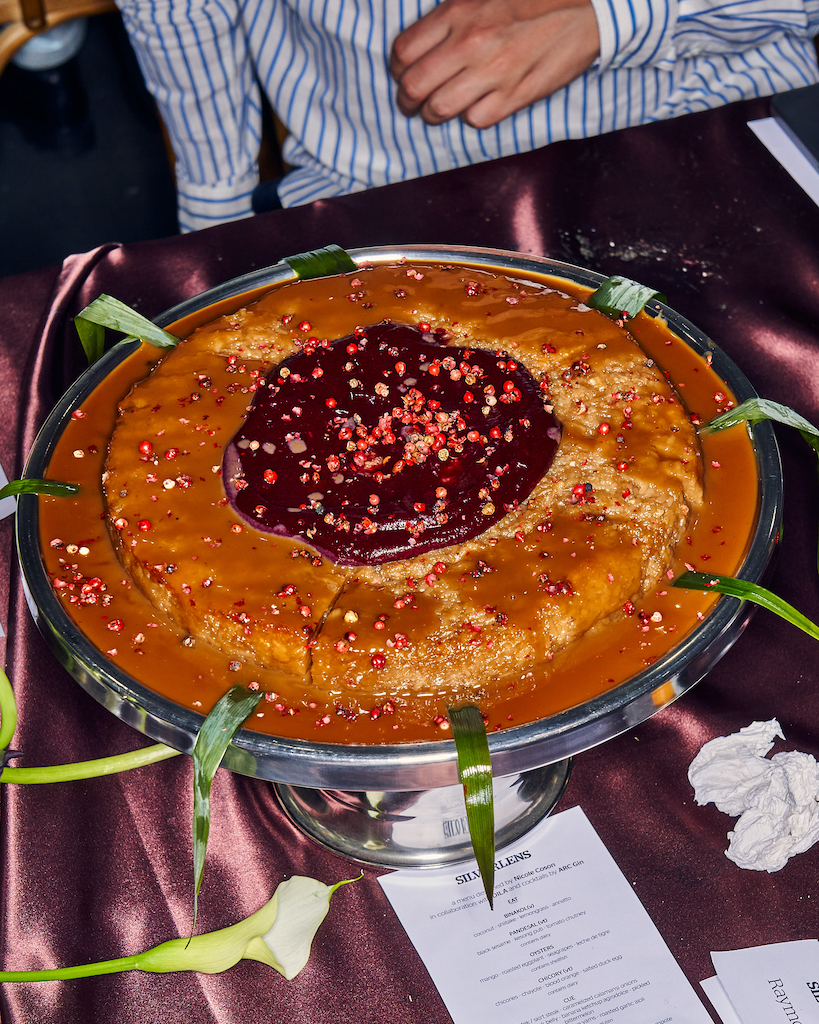
And lastly, for those who are unfamiliar with your work for Dila, what parts or ideas in this dinner, would you say are signatures that are traceable to your vision of your pop-up concept?
Not a direct answer but something that’s related to my vision for Dila: Last year, I’ve brought Dila to different types of restaurant settings/formats: full service, cafe/coffee shop, bars, and a farm for a music festival. This year I want I take Dila to new spaces.
Most dishes in this menu have been already done in my previous popups at a different scale and in a different format. I want to keep showcasing our food in new spaces because I always think Filipino cuisine is very much transferable and adaptable.
